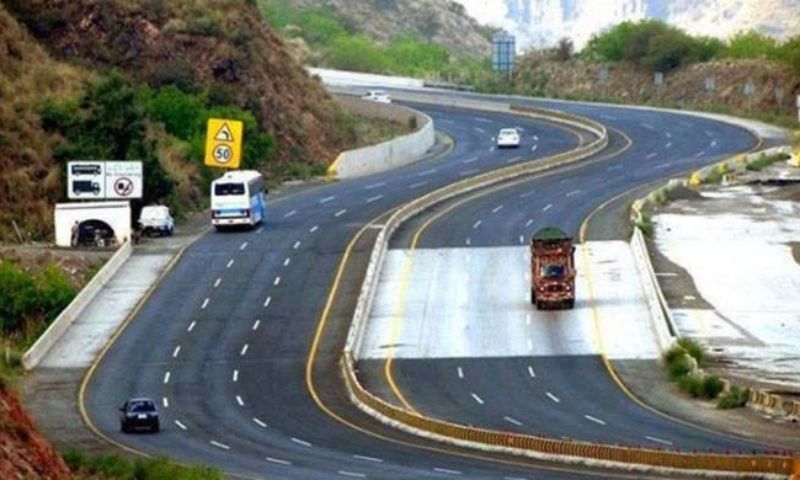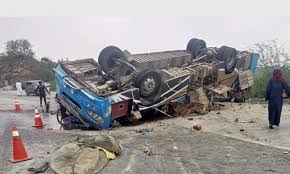The 10-kilometer stretch of Kallar Kahar Salt Range
once celebrated for its stunning landscapes
has become notorious for frequent accidents
By: Shah Asad Khan

The Islamabad-Lahore Motorway, or M-2, inaugurated in 1997, stands as a landmark project in Pakistan’s road infrastructure. This motorway has transformed travel and transportation, making them more accessible and cost-effective. However, despite its many benefits, M-2 poses significant dangers, especially in the Kallar Kahar Salt Range, an area in urgent need of governmental intervention.
High Accident Rates in Kallar Kahar Salt Range
The 10-kilometer stretch of M-2 through the Kallar Kahar Salt Range, once celebrated for its stunning landscapes, has become notorious for frequent accidents. The region’s captivating salt formations and serene vistas are now overshadowed by the grim reality of high accident and fatality rates. Since M-2’s inception, this segment has claimed countless lives, leaving families shattered and communities grieving. Additionally, the financial toll from property damage has reached billions, compounding this tragedy.
Safety Concerns Due to Steep Gradients
International road safety guidelines recommend a gradient of no steeper than 3% to 4% for motorways to ensure vehicle safety, particularly for heavy traffic. In contrast, the Kallar Kahar Salt Range features gradients between 6% and 8%, significantly exceeding these safe limits. This steepness increases the risk of brake failure and catastrophic accidents, often resulting in devastating outcomes.
A tragic incident on June 9, 2024, highlights the dangers of this perilous segment. A gas bowser lost control on the steep slopes, colliding with a car and igniting a catastrophic fire. Tragically, a doctor, his wife, and their two children perished in the blaze, alongside the gas bowser crew. This incident is just one among many; hundreds of accidents have occurred at this site since M-2’s launch, leading to numerous fatalities and immense property damage.
The Need for Urgent Action

The Kallar Kahar Salt Range is characterized by its steep inclines and sharp turns, which violate international safety standards. These hazardous conditions require exceptional driving skills and well-maintained vehicles. A momentary lapse in judgment or a minor vehicle malfunction can lead to lethal consequences. Even well-maintained vehicles struggle to maintain control on these treacherous slopes, increasing the risk of accidents.
In response to these alarming safety concerns, the National Highways & Motorways Police (NH&MP) and the National Highway Authority (NHA) have implemented several measures to reduce road crashes in the Salt Range. Initiatives include deploying additional NH&MP officers, using advanced speed-measuring equipment, enhancing road signage, establishing emergency climbs, improving banking on curves, and initiating a Public Service Vehicle (PSV) convoy system. While these measures are commendable, they serve as temporary fixes rather than long-term solutions.
Long-Term Solutions for Enhanced Safety
To ensure the safety of commuters and prevent further tragedies, a more permanent solution is necessary. This requires a comprehensive redesign of the existing road to eliminate steep slopes and sharp curves. Implementing gentler gradients and safer design alternatives could significantly enhance commuter safety. Transforming this notorious black spot into a safe passage for travelers is not just a challenge for the government; it is an urgent obligation.
By prioritizing impactful design interventions that comply with international standards, we can transform this dangerous stretch of motorway into a safer thoroughfare, ultimately protecting the lives and property of commuters.























